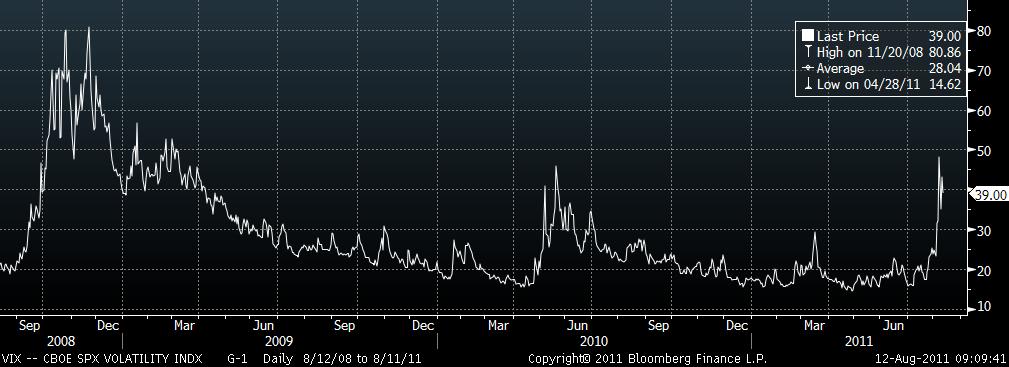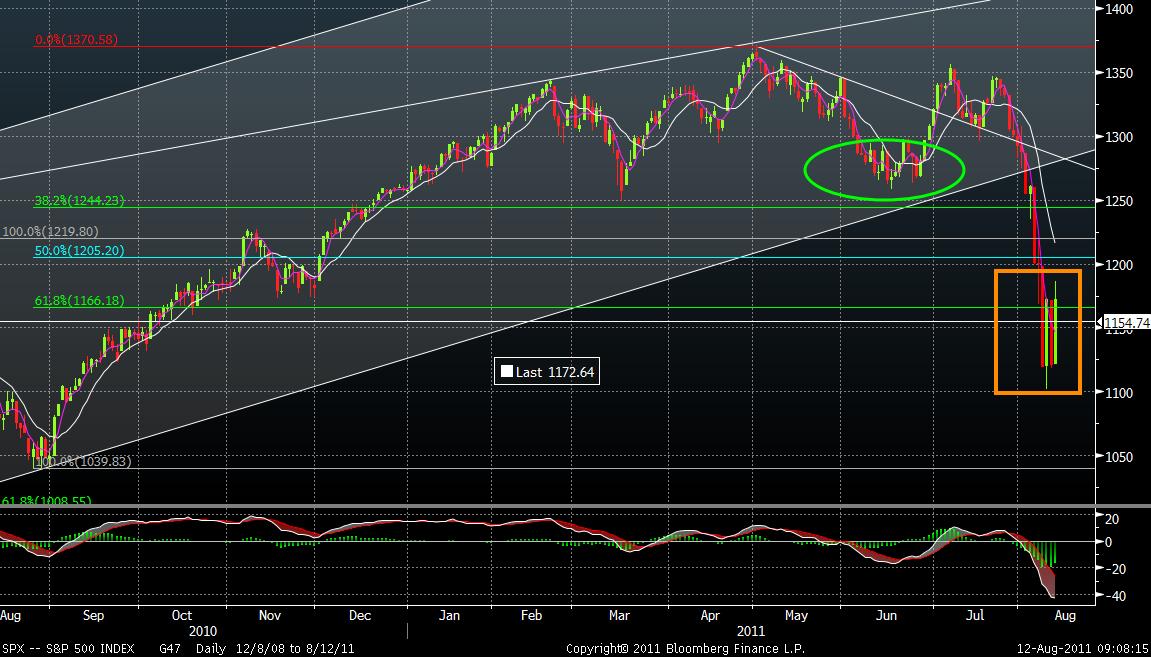Markets are nothing if not volatile at the moment as last nights price action again showed. From the low yesterday after the employment number the AUD has rallied 230 pips to sit at 1.0336 as I write. The Dow finished up 423 points or 3.95% and equities and so-called risk assets generally had a much better night.
But the question is what are these market moves telling us – is it a top of a bottom? This type of volatility is not usual in markets, even though the price of volatility was higher back in the early days of this financial crisis (see chart below) in these dark days of the late 2008 early 2009 panic in the markets we didn’t see the size and scale of these moves in opposing directions we are seeing this week.

It tells me a couple of things – first the short-term and high frequency traders are in charge of the market at the moment which is not a good sign at all for health of markets or the global economy. These guys are the velociraptors of finance rooming around the jungle scaring and eating anything in their path.
The second thing that this volatility tells me is that no-one really knows and people are scared. Scared of putting on trades and getting stopped out, scared of what it might mean for the superannuation in Australia or 401k in the United States and generally just worried about the outlook.

But for those of us who spend our time study the structure of markets in order to try to discern some clarity as to their direction this is a really interesting week. Moves like the ones we are seeing at the moment, coming after a very deep move lower in the past month could be a sign that the market is trying to put in place a bottom. I am using the S&P 500 as the bellwether index for global equities and the bellwether of risk – for example over the last month the correlation between the movements in the AUD and Australian 3 year swap rates on a daily basis with the moves in the S&P (directionally) has been 0.848 and 0.829 respectively. Over three months these correlations have been a still strong 0.773 and 0.77 respectively.
At its lowest point this week the S&P had fallen 18.17% from where it was on the 22nd of July when all this carnage started – that is a very sharp move lower and structurally markets are very oversold. I have put an orange box around the last week’s trade and the lower part of the graph is the MACD indicator I use for helping me tell when a market is oversold or overbought. Now interpreting these things is more art than science but this indicator suggests the market is heavily oversold at the moment.
In general we would be looking for a bounce, or a period of stability in prices to wash away this oversold position – from a purely technical perspective that would be the way that I am betting (not advice though folks this is just my view). this should wash through other markets as well which are following the moves in US equities.
The question of sustainability is another question entirely and one that rests on economic outcomes over the coming months and the ability, crucially, of central bankers and governments to get their arms around the European debt problems that remain front and centre of investors and traders minds. For mine I am hopeful that the market can stabilise because even though I have a view that the global economy is weakening fractured equity markets will just exacerbate the downturn as they sap the life of people’s confidence in their economic future.
The one thing we do know though is that while the short-term traders are in control volatility reigns. Traders can and are trading this volatility but for longer term investors the sidelines or current positions is the place to be.
This blog is for information only and does not constitute advice. Neither Greg McKenna nor Lighthouse Securities has taken your personal circumstances, objectives or financial situation into account. Because of this you should, before acting on this information, consider its appropriateness, having regard to your objectives, financial situation or needs.